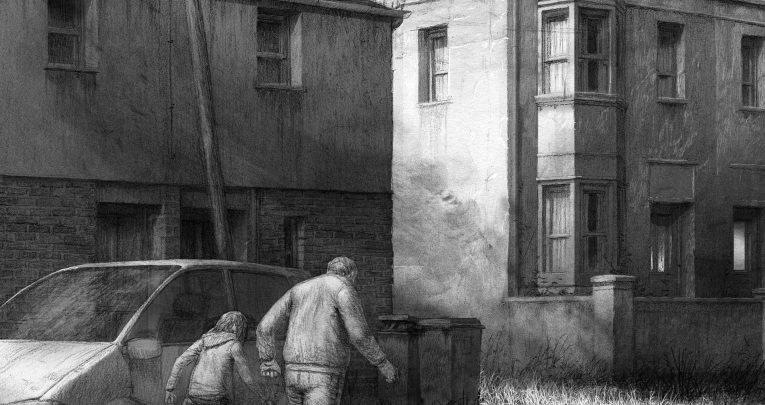Teach children to engage with illustrations as deeply as you do text, says Levi Pinfold

Levi Pinfold reckons that we should teach children to engage with illustrations as deeply as they learn to dig down into text….

- by Levi Pinfold

The first book I read all the way through, by myself, was The Three Billy Goats Gruff, from Ladybird’s ‘Well Loved Tales’ series. The pictures were brilliant; I can see them now, if I think about it.
 I remember the feeling of triumph at having finally mastered this essential skill, especially as my older siblings had managed it ages before. I expect I danced about, and showed off a bit – well, you would, wouldn’t you?
I remember the feeling of triumph at having finally mastered this essential skill, especially as my older siblings had managed it ages before. I expect I danced about, and showed off a bit – well, you would, wouldn’t you?
My parents weren’t the type to order us to read – instead, they’d just sort of leave books around, where they might get picked up by one or another of us. On one occasion, my uncle and auntie came to visit, and they had a massive pile of library remainder books with them.
They plonked this huge box down in our house, and it was like Christmas. We had books everywhere – all kinds, all genres, and not all children’s titles, either. I was far too young when I read Stephen King for the first time… but I enjoyed his work.
I suppose I was drawn to reading, but that wasn’t my only pastime as a child – it was just one of the many things that were pleasurable. And it was the whole experience that appealed to me; the cover, turning the pages – I relished the thrill of a story, but I loved books as objects, too.
I’ve carried so many of them with me into adulthood, like Where the Wild Things Are, of course, and Faeries, by Alan Lee and Brian Froud, which is one of those artistic creations that cements itself in your mind forever.
I never walk past a pond and don’t think about Jenny Greenteeth, and that terrifying illustration of her stretching a bony arm out of the water, about to curl her fingers around the ankle of a child and drag him into the depths with her…
It’s the frightening stories I tend to remember above all others, in fact. Hansel and Gretel, and all those other dark and ominous tales. I love the strange and the interesting; the otherworld, and the world of the imagination. And I’ve always liked picture books – and comics – best.
Illustrations are what invite you into a narrative; they tantalise you – but it’s the story that keeps you there.
When I’m illustrating a story, whether it’s my own or someone else’s, it always, always comes back to the text. That’s what you are trying to represent, as best you can.
Even if I do have an image in my head before I write, it rarely makes it through to the final pictures, because by then, I have words that I need to service. Collaborating with another author is always a lovely experience, though, because you are pushed in directions you never thought you’d go. You get to know the other person incredibly well.
And then there’s the experience of working with a narrative for which there is already a very potent visual element out there in the public domain, which is different again.
Illustrating the Harry Potter books was a huge challenge, of course, but it was immensely satisfying, too. However hard you try, those previous iteration will be in there – but the thing is, there are descriptions in the books that the films got absolutely right, so it would be foolish to ignore that, on the grounds of some kind of principle, or determination to be different.
You’re stepping into a shared universe with a project like that; and there’s a communal feel to it, which is really nice.
I know I would say this, but I do think there is definitely the potential for more illustration in books, especially those that are produced for older readers. At the moment, there’s this kind of hierarchy, in which you start with picture books, and the older you get, the less artwork there is, until you finally end up with ‘grown up’ titles, that are just text.
But no one stands in a gallery looking at a great painting and thinking, “Oh, that’s only for children!”. People tend to think they are being ‘talked down to’ with pictures – but whilst it’s true that you can read them very quickly, that doesn’t mean they aren’t saying complicated and serious things.
I think that being able to ‘read’ pictures is important, and enjoyable. And up until the age of about six, kids can generally do it pretty naturally – but then we ‘persuade’ them out of the habit, because text is king; which really limits what you can do, as an illustrator, with this amazing art form.
Reading images is no different from reading words, though, in that it helps you decode and unlock meaning in the world around you, and leads you to a deeper understanding. Wouldn’t it be great, then, to have it taught in schools?











